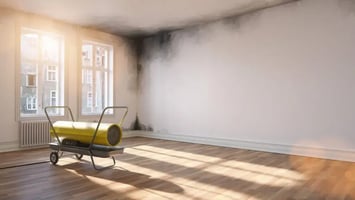At Altiers, we are thrilled to introduce Mosaic+, a revolutionary advancement in modular panel...
Overview of MCM Panel Attachment Systems
.webp?width=2544&height=1088&name=The-Grid-Edit2.jpg%20(1).webp)
Metal Composite Material (MCM) panels are a hallmark of modern architecture, and we’re all familiar with the vibrant colors and sleek finishes from brands like Alucobond, Alfrex, and Alpolic. These panels elevate building exteriors, but their effectiveness depends on the attachment systems that anchor them. These systems ensure structural integrity, weather resistance, and design flexibility. Below, we explore the most popular MCM panel attachment systems, outlining their pros, cons, applications, and brand examples that all incorporate the same material from the MCM manufacturers!
1. Route-and-Return Dry Joint System
- How it Works: Panels are routed and folded at the edges to create a return, then attached to a subframe (typically aluminum extrusions) using clips, screws, or concealed fasteners. Unlike wet-joint systems, no sealant fills the joints; instead, a gasket or backer rod is often placed behind the panel edges to create a dry seal, allowing water to drain through an open joint while preventing direct infiltration. An air cavity behind the panels promotes ventilation and moisture management.
- Pros: Excellent moisture control, low maintenance, accommodates thermal expansion, enhances energy efficiency with ventilation.
- Cons: Higher initial cost due to subframe and gasket materials, requires precise installation to ensure proper joint function, slightly more complex than wet-joint setups.
- Applications: Ideal for modern commercial buildings, institutional structures like schools or offices, and projects prioritizing sustainability and longevity.
- Examples: Altiers System 2000; NexGen's Evolve System (Double Route-and-Return)
2. Route-and-Return Wet Joint System
- How it Works: Panels are routed and folded at the edges, then fastened to a substrate (often aluminum extrusions or steel) with screws or rivets. Joints are sealed with silicone or similar sealants to block water infiltration.
- Pros: Cost-effective, straightforward installation, reliable water protection when sealed properly.
- Cons: Requires periodic maintenance to inspect and reseal joints, less accommodating of thermal movement, visible fasteners may affect aesthetics unless concealed.
- Applications: Suited for flat-panel facades on commercial buildings, retail centers, or smaller structures where budget is a priority.
- Examples: Altiers System 1000
3. Pressure-Equalized Rainscreen (PER) System
- How it Works: An advanced rainscreen with compartmentalized cavities behind panels to equalize air pressure, reducing water penetration. Panels mount with clips, hangers, or structural trim.
- Pros: Exceptional weather resistance, ideal for high-wind areas, long lifespan, supports energy efficiency with proper insulation.
- Cons: Unless it uses structural trim (like our example below) these systems are expensive due to complex design and materials, requires skilled installation, overkill for smaller or sheltered projects.
- Applications: Best for high-rise buildings, industrial facilities, or structures in exposed locations needing top-tier performance.
- Examples: Engage Building Products - QuickPanel (trim) - Using trim also allows QuickPanel to be cut and installed onsite, making it very jobsite friendly.
4. Modular / Cassette System
- How it Works: Pre-fabricated MCM “cassettes” (panels with folded, box-like edges) hang onto a framework via interlocking rails or hooks, often with hidden fasteners. This is often folded from thick aluminum or steel to accomplish the same effect.
- Pros: Fast installation, uniform aesthetic, integrates rainscreen benefits, reduces on-site labor costs.
- Cons: Higher upfront cost for pre-fabrication, less flexible for on-site adjustments, requires precise shop drawings.
- Applications: Great for mixed-use developments, residential towers, or large-scale projects needing efficiency, consistency, and customizability.
- Examples: NexGen's Mosaic+
Key Considerations
Aluminum extrusions dominate as subframes across these systems, offering lightweight strength and corrosion resistance. Thermal breaks, such as polyamide spacers, are often added to improve energy efficiency by minimizing heat loss. Mechanical fasteners—clips, screws, rivets—outperform adhesive-only methods for their reliability and compliance with strict building codes, especially in high-wind zones.
Want to discuss further options for your next project? Contact us today!



